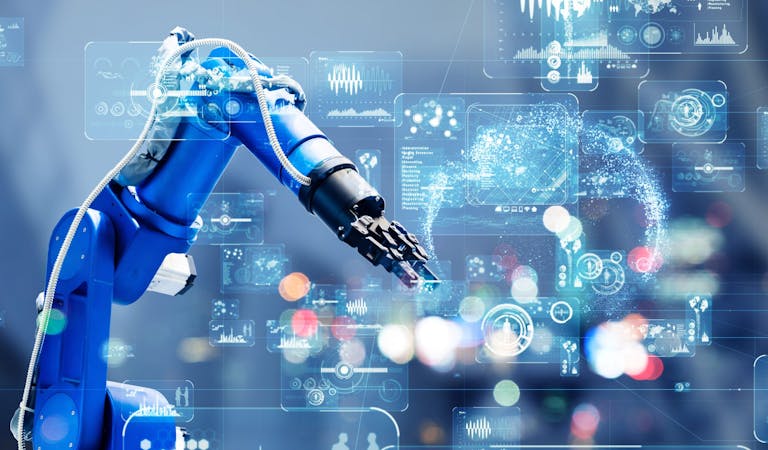Industry 4.0: Protect data from simulation and cyber-physical systems

Companies improving production processes with cyber-physical systems and simulation create entirely new forms of value. Here’s a quick introduction to what should be protected and how.
The business models of the fourth industrial revolution are being developed in real time. The drivers are large amounts of data. Industrial companies all over Norway have come a long way in implementing new technology, and reap new rewards, in the form of more efficient production processes, PaaS and new business models. Specifically, it is possible that data flows create the greatest potential for value creation over time, and databases have great value in improving today’s value chains all the way to the customer, but also for suppliers of machines, software and ERP solutions.
Valuable data from cyber-physical systems
Business models based on cyber-physical systems (CPS) mean that mechanisms are controlled or monitored by algorithms. CPS is used for real-time monitoring and control of production, often based on continuous data collection that can be used in prediction models. In a proprietary, closed system with limited access to outsiders, the elements of the system can be protected as trade secrets with appropriate documentation and control routines. Here one should look at the possibility of protecting software such as proprietary communication protocols, where, among other things, a patent can provide revenue streams in the form of licenses, or access to technology in the form of cross-licenses. Suppliers of machines and systems are aware of the value of data produced by their customers; and are ready to appropriate their customers use of cyber-physical systems, as the database both represent a value in itself, and an opportunity for further value creation by creating even better services. This is not only valid for the party who has generated the data, but also for the competitors who would like to catch up. Your company’s data creates value through troubleshooting, upgrades, accurate service needs calculation, demand prediction, customer interaction analysis with the company’s products and services, and so on. Therefore, companies using CPS should incorporate investment protection into their agreements with partners and end users. Keep this in mind especially when entering into agreements with vendors who want to access your data.
“Suppliers would like to capitalize on end-users’ use of cyber-physical systems, as the database is both a value in itself, and represents an opportunity for further value creation by creating even better services. Not just for the player who has generated the data, but also for the competitors who would like to catch up. «
Andreas Werner
Simulation as competitive advantage
With simulation modeling, the real world is simulated by using real-time data to run a real or virtual process or system. The technique is used for everything from research and development to testing, calculations and training. The best known uses are digital twins and virtual Industry 4.0 factory concepts. The major advantage is the reduction of risk. By optimizing settings on machines and testing the outcome before it is implemented in production, there will be fewer errors, lower testing and development costs, and increased system capacity. Therefore, advanced simulation models are of great value to the industry.
“From a protection perspective, unfortunately, there are uncertainties as to the extent to which such processes are suitable as the subject of legal protection. Pure mathematical models are considered ideas and cannot be patented. However, virtual simulations linked to a real-world effect can, in some cases, be considered as patentable technology. The clarification of the legal implications and possibilities of this issue will be investigated at European level, and a long-awaited account will be available in 2021. »
Andreas Werner
How business critical is the simulation?
Businesses running simulations should identify the role of simulation modeling in the business model. This is to identify the elements that can be handled and controlled. Access to the right data is best ensured by entering into agreements with customers, suppliers and end users. This is very important because access to user data and / or operational data is a crucial prerequisite for further development. Ownership of the information that arises in the processes is important for securing the right to both system optimization and economic utilization, in which case agreements should be drafted in accordance with current data management legislation, such as GDPR. In addition, routines should be established when generating databases. The routines should ensure that these fall under the legal protection of databases as laid down in law, and, if possible, ensure secrecy where possible.
Bidragsytere
Andreas Werner
Cand.Scient Fysikk, Elektronikk og måleteknikk
Andreas er patentrådgiver og har bakgrunn innen fysikk, elektronikk og måleteknikk. Har han bl.a. jobbet i Tandberg Television, Cisco Systems og IDEX ASA som IP Specialist.
